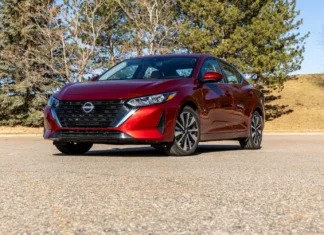
Air Travel
The Nürburgring is located in southwestern Germany in a small town called Nürburg. The closest airport is Cologne’s Bonn (although Frankfurt is usually considered the closest international airport with direct flights from the U.S.). Cologne Bonn is roughly an hour and ten minutes from Nürburg. Frankfurt is around an hour and a half to two hours depending on traffic.
Ground Transportation

Driving in Germany is quite easy if you pay attention and follow the road rules and don’t speed in towns where unmarked photo cameras are everywhere. Speeding within 20 kmh over the posted limit results in a small fine of roughly 30-40 euros. Go 20 kmh or faster and the fines jump: I was nailed doing 22 kmh over the speed limit that resulted in a 105 euro fine. One more tip: NEVER, EVER pass on the right. Not only do Germans hate that, but if a Cop busts you doing this, it can result in a heavy fine as well. Otherwise, I found German drivers much more poised and competent than most American drivers. I think you’ll find driving in Germany to be a worthwhile experience in and of itself.
Accommodations

- Camping is fairly common for the famous 24-hour race that takes place at the ‘ring every May. But outside of that race, I didn’t sense that camping was condoned or organized.
- Homestays are very common at the ‘ring. They work like an Airbnb (in fact, many of them are listed on Airbnb) where the host family rents out an apartment, or room of their own house to a guest. If you are trying to find accommodation on a budget, this is likely your best route with prices as low as $40 per night depending on the house.
- Hotels are plentiful, to truly splurge, the Dorint am Nürburgring, is located right on the track, next to the GP circuit. During race events room prices here can cost as much as $5,000 per night. But prices are much more reasonable when there is no racing. The cheapest room is around $120 per night and, if you’re lucky, could come with a view of the track. Note: Expect a lot of screaming car noises to seep into your room. If you don’t want to listen to cars racing from dawn until dusk then look elsewhere. I found hotels in an around the ‘ring during weeks where there’s no racing start around $100/night and go up from there.
Other Activities
There is a great racing museum at the ‘ring and you can also take tours of the GP track’s paddocks and facilities to see what goes on backstage at a race event. There is also a castle in town to explore. It sits at one of the highest points in the vicinity of the track, and can be seen at many different points on the course. But in the towns surrounding the ‘ring there is not a whole lot to do. You are going to have to drive a little bit to get to some of the fun stuff. Fortunately, this means you get to utilize the Autobahn! Stuttgart is only about 3 hours away and it hosts two of the best car museums in the world, Mercedes-Benz’s and Porsche’s. Each of these museums deserve a good three hours to visit and only cost around 10 euros to enter.

This Nürburgring travel guide should give you the basics to start your planning. You can make it as inexpensive or posh as you want, depending upon your budget. I can tell you from my own experience, it doesn’t have to be as expensive as you may believe. In fact, I was able to do this trip on a budget of only $1,000. My track experience cost me $500. The Airbnb, which I split with a friend, was $20 per night for five nights, totaling $100. My rental was $150 for the week, split with the same friend. Airfare was only $100 round trip, heavily mitigated by the fact that I was travelling from Europe, and not the US (here is where there will likely be a large price discrepancy). The last $150 was used for food and other activities, including the two museums mentioned above. Hopefully I have shown that this trip is actually really doable, and can provide you with an excellent cultural experience, while also allowing you to fulfill a motoring dream.























